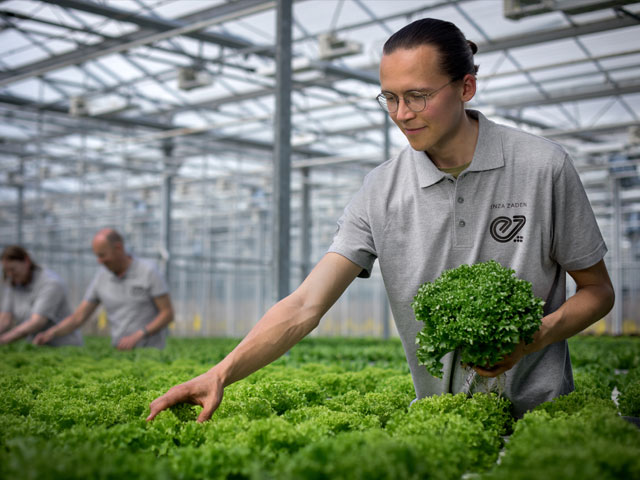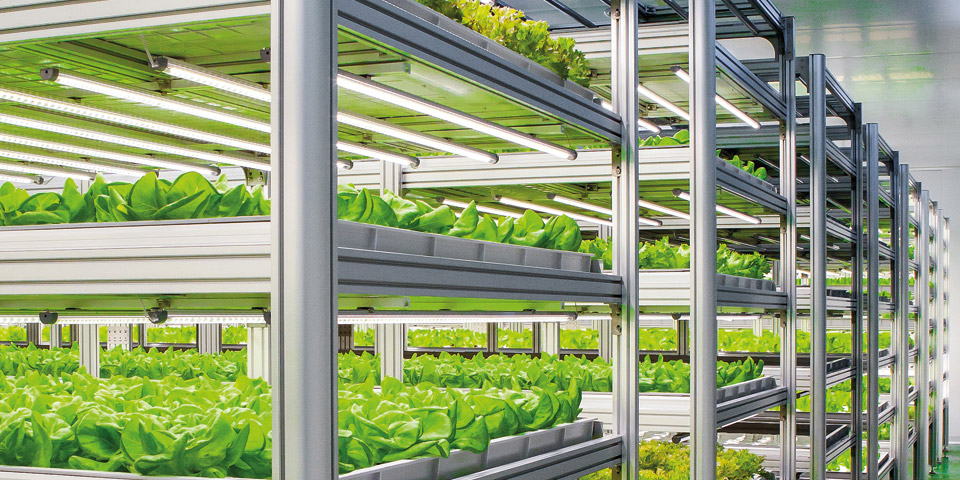
20 August 2019 News

Vertical Farms may seem like a Valhalla for plant cultivation. Growing crops under perfect, consistent climate conditions all year round. Continuous production with constant quality—ideally, in multiple layers stacked on top of one another. But are Vertical Farms really the Holy Grail they first appear to be?
As with all new developments, teething problems are part of the journey. The first Vertical Farming companies faced quite a few setbacks, with some even forced to close due to technical issues, high operational costs, and disappointing sales results. And yet, the number of new Vertical Farms continues to grow steadily. Over the past two years, at least 200 have been established worldwide—a trend we expect to continue over the next decade, as noted by our Senior Product Specialist.
This growth is driven by rapid advancements. ‘Fluorescent lighting has now been replaced by more efficient LED lighting, and in collaboration with the lighting industry, companies have developed various crop-specific light recipes,’ explains our Lettuce & Endive Portfolio Manager, Anh Nguyen. ‘We’re now entering the third development phase, where customised light recipes and remote crop management will take center stage. Through the use of sensors, vision technology, smartphones, and apps, cultivation can, in principle, be monitored and managed from anywhere in the world, 24/7.’ We expect technology to become increasingly affordable and deliver higher yields, helping Vertical Farms to lower their cost prices and become more competitive with conventional growing methods.

This expectation is likely to materialise faster in the East than in Europe. Countries like Taiwan, Singapore, China, and Korea are already very enthusiastic about vertical farming. ‘In Japan and Taiwan, urban consumers have a growing need for fresh vegetables that are guaranteed to be clean and safe. Thanks to a high standard of living, they’re both willing and able to pay a premium for it,’ explains Jasper den Besten (Lecturer at HAS University of Applied Sciences in Den Bosch and Board Member of the globally active Association for Vertical Farming). ‘Moreover, these countries are heavily focused on new technologies, so it’s no surprise that vertical farming is really taking off there. In North America, it’s mainly investors and marketers who are drawn to the concept, while Europe falls somewhere in between,’ according to Den Besten. ‘In many European countries, the current cost price is still too high, but the consistent quality achievable in a Vertical Farm remains very attractive. After all, supermarkets are not fond of the fluctuating quality often seen in conventional production methods.
Reducing the cost price of vertical farming is essential—wherever in the world it's being practiced—and we’re fully aligned with that goal. As our Senior Product Specialist explains, ‘Seed companies have traditionally selected their varieties under diverse climatic and light conditions. In a Vertical Farm, however, those conditions are basically always the same. To truly understand how our varieties perform under such circumstances, we must test them in that same environment. That’s exactly what we’re doing. And we’re already seeing that this leads to different choices compared to selection programmes for conventional cultivation methods.’

Our Area Manager Japan & Korea, Young Han, recently observed an exciting new trend in the metro stations of Seoul: lettuce factories behind glass walls. These setups include machines that allow busy commuters to grab a locally grown, automatically harvested, and freshly packaged head of lettuce straight from the wall. Every day, millions of commuters witness how crops are grown under LED lights and are automatically harvested and packaged. Perhaps a great idea for the long walkways at Schiphol?